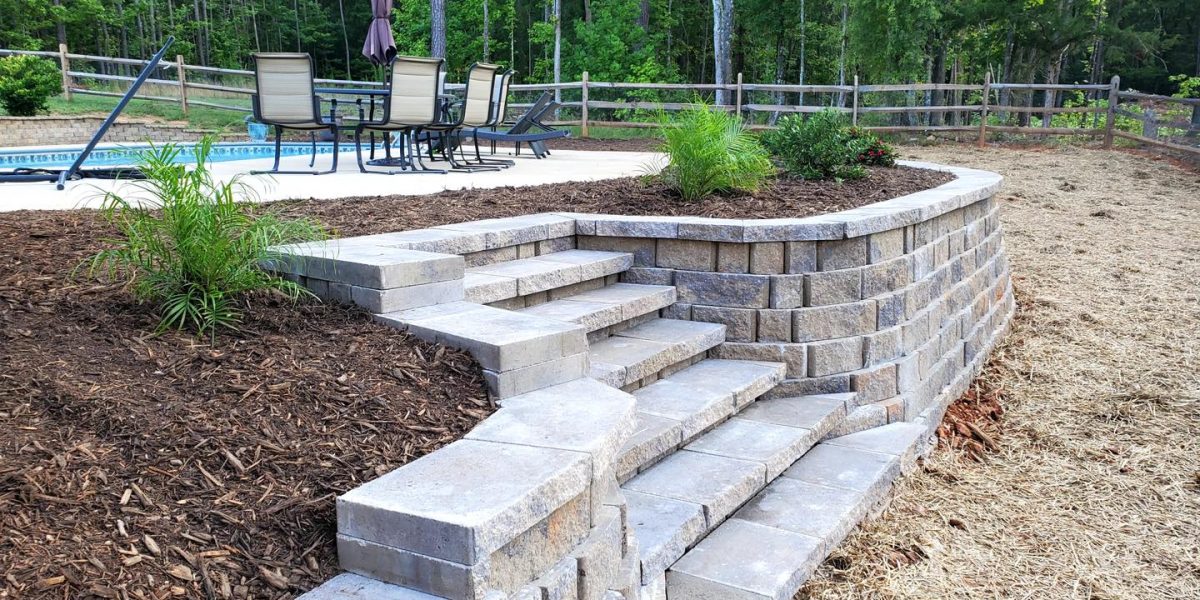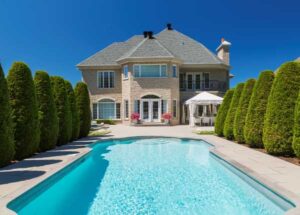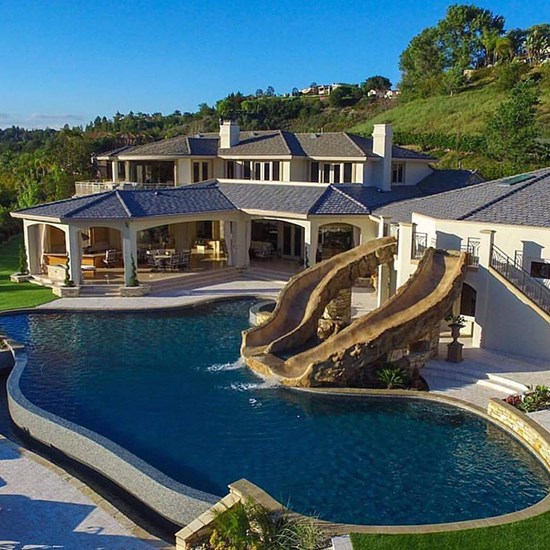Why Retaining Walls Are Essential in Home Landscaping
Retaining walls are more than just functional structures in your backyard. They can be a key element in transforming your outdoor space, providing both practical and aesthetic benefits. Whether you have a sloped yard, need to control erosion, or want to create distinct garden areas, a well-designed retaining wall can help.
These walls hold soil in place, giving you more control over your landscape’s layout. This is especially useful for homeowners with uneven terrain. Fiberglass Pool Installation helps integrate these walls with areas where a pool could be installed. Retaining walls provides a clean, organized look and makes your yard more manageable.
But retaining walls aren’t just about function. They can add beauty to your yard. With the right design and materials, majestic rocks can be used in the construction of these walls, transforming them into a focal point. From natural stones to sleek concrete blocks, the options are endless. A durable and attractive retaining wall can enhance your home’s curb appeal and increase its value.
Ready to explore the benefits of retaining walls in your home landscaping? Discover why these structures are essential, practical uses, materials to choose from, and design tips to make your yard both functional and beautiful.
Why Retaining Walls Are Essential in Home Landscaping
Retaining walls play a crucial role in home landscaping for several reasons. First, they help prevent soil erosion. When you have a sloped yard, heavy rains can wash away valuable topsoil, leaving your garden and plants struggling. Custom Pool Design could also use this functionality for areas where water management is critical.
Another reason is that they help create usable space. If your yard has steep inclines, it can be difficult to find flat areas for seating, gardening, or play. By building retaining walls, you can create level terraces in Charlotte, turning an unusable hillside into a series of flat, functional spaces.
Retaining walls also improves drainage. Poor drainage can lead to water pooling in unwanted areas, which can damage your plants and lawn. A well-designed retaining wall can direct water away from these areas, ensuring better water management for your entire yard.
By adding retaining walls, you also enhance the visual appeal of your property. These structures can act as a backdrop for plants and flowers or serve as a stunning focal point. Whether made from natural stone, brick, or concrete, retaining walls add texture and interest to your landscape, making your outdoor space more inviting and attractive.
Practical Uses of Retaining Walls
Retaining walls serve many practical purposes in residential landscaping. Here are some of the most common uses:
-
Erosion Control:
Retaining walls is essential for preventing soil erosion on slopes. They hold back the soil, keeping your garden beds and lawn safe from washouts. This is especially important in areas prone to heavy rainfall. Custom Pool Design could also use this functionality for areas where water management is critical.
-
Creating level areas:
If your yard is uneven or sloped, retaining walls can help create flat, usable spaces. These terraces can become areas for gardening, seating, or even installing a pool. Hardscaping these areas can increase their utility, making your outdoor space more enjoyable.
-
Enhancing Aesthetics:
Retaining walls add a structured, organized look to your garden. They can be designed to match your home’s exterior or the natural surroundings. With various materials available, you can choose a style that complements your yard. For example, water features like fountains could be added around the retaining wall to boost its visual appeal.
-
Defining Spaces:
Use retaining walls to define areas within your landscape. For example, you can separate a play area from a garden or create distinct zones for entertaining and relaxing. This helps organize your outdoor space in Weddington, making it more enjoyable.
-
Improving Plant Growth:
Retaining walls can create raised garden beds. These beds are easier to access for planting and weeding. They also provide better drainage, which promotes healthier plant growth. Raised beds can be filled with nutrient-rich soil, giving your plants a better growing environment.
Retaining walls offer multiple benefits and practical uses that make them a valuable addition to any home landscape. Whether you’re looking to prevent erosion, create usable space, or enhance the beauty of your yard, retaining walls can help achieve your goals.
Choosing Durable Materials for Your Retained Wall
Selecting the right materials for your retaining wall is crucial for durability and longevity. Different materials offer varying levels of strength, appearance, and cost. Here are some popular choices:
-
Concrete Blocks:
Concrete blocks are a common material for retaining walls due to their strength and versatility. They come in various sizes and shapes, allowing for flexible design options. Concrete blocks are durable and can withstand harsh weather conditions, making them a reliable choice for long-lasting walls.
-
Natural Stone:
Natural stone provides a timeless and elegant look. It blends seamlessly with natural surroundings, offering a more organic feel. Stones like granite, limestone, and sandstone are often used. Though more expensive, they provide excellent durability and aesthetic appeal.
-
Brick:
Brick retaining walls offer a classic look that matches many home designs. Bricks are sturdy and provide good support for retaining soil. They are also resistant to weathering, ensuring your wall will stand the test of time.
-
Timber:
Timber retaining walls are a more affordable option. They offer a rustic charm and are relatively easy to install. However, timber may not last as long as stone or concrete, especially in wet climates. Proper treatment and maintenance can extend its lifespan.
-
Gabion Baskets:
Gabion baskets are wire containers filled with rocks or concrete. They offer a strong and flexible solution for retaining walls. Gabions are easy to install and allow for good drainage, preventing water buildup behind the wall.
Choosing durable materials ensures your retaining wall will be strong, functional, and attractive for many years. Consider the specific needs of your landscape and climate when making your selection.
Design Tips for Aesthetic and Functional Retaining Walls
A well-designed retaining wall not only serves its practical purpose but also enhances the beauty of your landscape. Here are some design tips to create both aesthetic and functional retaining walls:
-
Blend with the Landscape:
Choose materials and colors that complement your existing landscape. Natural stone and earth-toned concrete can help your wall blend in seamlessly with your garden.
-
Incorporate planting areas:
Design your retaining wall with built-in planter boxes or spaces for vegetation. This adds greenery and softens the look of the wall, making it more visually appealing.
-
Add Curves:
Straight walls can look rigid and stark. Incorporating gentle curves creates a more natural and flowing appearance. Curved walls are also structurally stronger and can handle soil pressure better.
-
Include Steps:
If your retaining wall is part of a sloped yard, consider adding steps. This not only provides easy access to different levels but also adds an attractive design element.
-
Lighting:
Incorporate landscape lighting into your retaining wall. This can enhance safety and create an inviting ambiance at night. Use low-voltage lights or solar-powered options for an eco-friendly solution.
-
Terracing:
For larger slopes, consider building multiple smaller walls rather than one large one. Terracing breaks up the height, making the wall more stable and visually interesting.
By following these design tips, you can create retaining walls that are both functional and beautiful. Thoughtful planning can transform these structures into key features of your landscape.
Conclusion
Retaining walls is essential in home landscaping, providing solutions for erosion control, creating usable spaces, and improving aesthetics. By choosing durable materials and incorporating thoughtful design elements, these walls can become a highlight of your outdoor space.
From pool designs to hardscaping, your choice of materials and integration of these services will impact both the look and longevity of your retaining wall. Design features like curves, steps, and lighting can further enhance its appeal and functionality.
Ready to improve your landscape with a stunning and effective retaining wall? Contact Majestic Pools today to start your project! Call +1 803 879 5658 to schedule your consultation and get expert assistance on all your landscaping needs in Lake Wylie, Rock Hill, or Charlotte!





